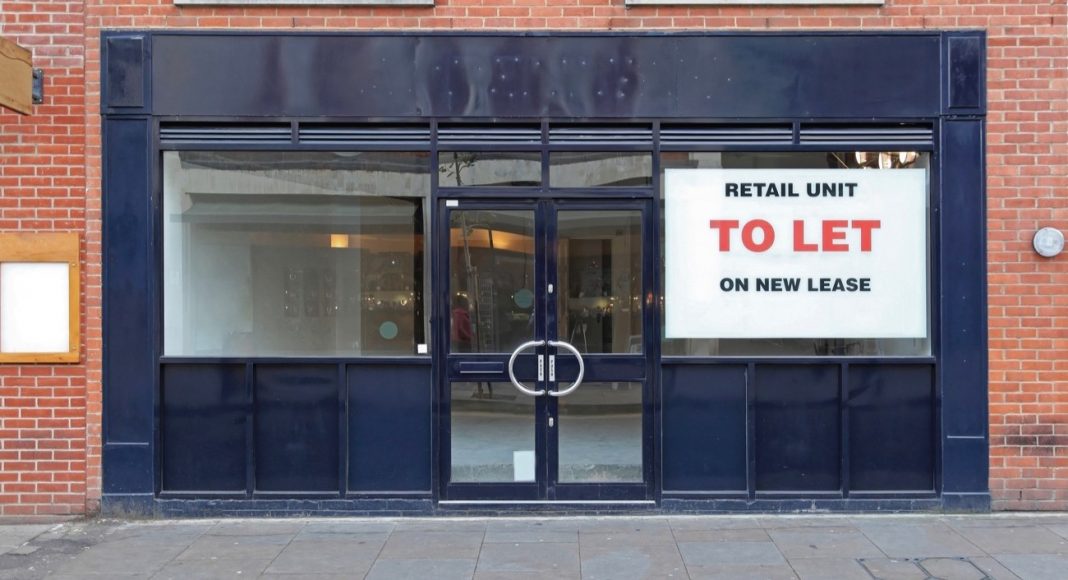In an excerpt from his new book Retail Recovery, retail expert and author Mark Pilkington explores the impact of the sector’s decline in the years that preceded the pandemic on the commercial property market.
The steady decline of the retail sector in the five years preceding Covid-19 had already had severe consequences for the Real Estate Investment Trusts (REITs) that owned the commercial property in the malls, shopping centers, and high streets. Their traditional business model had been to borrow money long-term to finance the building of these edifices, secured against the leases they had signed with their retailers. In many parts of the world, these leases were very long-term (for example, typically five to 10 years in the UK) and thus provided what was seen as a reliable source of future income.
This model worked well for many years, until the retailers started to go bankrupt at an alarming rate and used bankruptcy protection measures such as Company Voluntary Arrangements (CVAs) in the UK and Chapter 11 in the US to negotiate exits from their onerous leases. At this point, the REITs started to run into trouble and many of them saw their share prices decline steadily through the period running up to the Coronavirus crisis. In addition, their debt— typically bundled into bonds known as Commercial Mortgage-Backed Securities (CMBS)—also faced steep declines in value. The collective worth of these assets was very considerable. In 2017, the Economist suggested that the total amount of capital supporting US retail and retail property, including both equity and debt, was around $ 2.5 trillion.
CMBS-over
It was not just the share prices of the REITs that were at risk. The mortgages that they had taken out on their properties were wrapped into commercial mortgage-backed securities (CMBS). The delinquency rate for CMBS spiked from 2 percent in April 2020 to over 10 percent in June—the biggest increase since records began. Within this, Retail CMBS delinquencies increased from 4 to 18 percent.
In 2020, there was about $4.6 trillion’s worth of commercial mortgages in the US, half of which were housed on the balance sheets of big banks. According to a senior Wall Street banker, reported in Vanity Fair in April 2020, about 2,600 CMBS borrowers had contacted banks looking for relief on nearly $500 billion’s worth, or 12 percent, of the total; 30 percent were retailers.” That was just in March,” he said. “This thing is not staying at 12 percent default, which was higher than we ever saw in the 2008 crisis on commercial mortgage-backed securities. This is going to spike.”
Some of the big Wall Street banks were in worse shape than others: in April 2020 Wells Fargo had around $125 billion of real estate mortgages on its balance sheet, Bank of America had $85 billion, and JPMorgan Chase & Co. $65 billion. This is reminiscent of the subprime crisis of 2008, when toxic residential mortgages were wrapped into collateralized debt obligations (CDOs) with disastrous consequences. The results this time risk to be the same over the next few years.
“The delinquency rate for CMBS spiked from 2 percent in April 2020 to over 10 percent in June—the biggest increase since records began.”
The UK
The situation was very similar in the UK, where the collapse of hundreds of retailers left property groups very exposed. For example, Britain’s largest retail property group Intu, which owned 17 shopping centers across the UK, including Lakeside and The Trafford Centre, went bankrupt in June 2020. After the lockdown had taken effect, Intu had received only 29 percent of the rent it was due.
Hammerson, which owned the Bullring shopping center in Birmingham and Brent Cross in London, as well as Bicester Village—the famous factory store center in Oxfordshire—saw its share price go down to 3 percent of its peak by January 2021. Ratings agency Fitch downgraded it to negative, indicating a substantial long-term risk of failure. It completed an emergency rights issue for £552 million in September 2020 to keep itself afloat. Unibail-Rodamco-Westfield (URW), owner of Britain’s number one mall, Westfield, and a slew of other top-end malls in Europe and the United States, saw the value of its shares drop by over 70 percent from its peak by mid-January 2021, and its credit rating cut by Moody’s. Meanwhile, British Land, owner of Meadowhall and Canada Water, saw its share value drop by 65 percent from its peak by mid-January 2021, and reported a £1 billion drop in the value of its property portfolio. This collapse in the valuations of the “big four” retail property groups in the UK speaks volumes about the damage wrought by the retail crisis and coronavirus on this important part of the commercial property market.
Excerpted from Retail Recovery: How Creative Retailers Are Winning in their Post-Apocalyptic World by Mark Pilkington (Bloomsbury Business, 2021). Used by permission. All rights reserved.
Learn more about our disclosure policy here.







